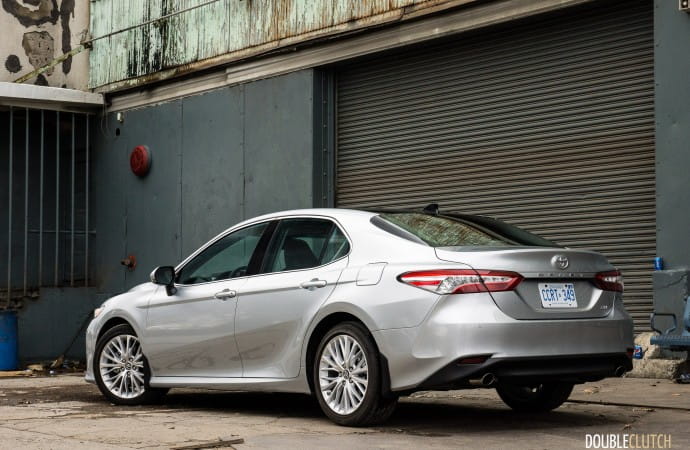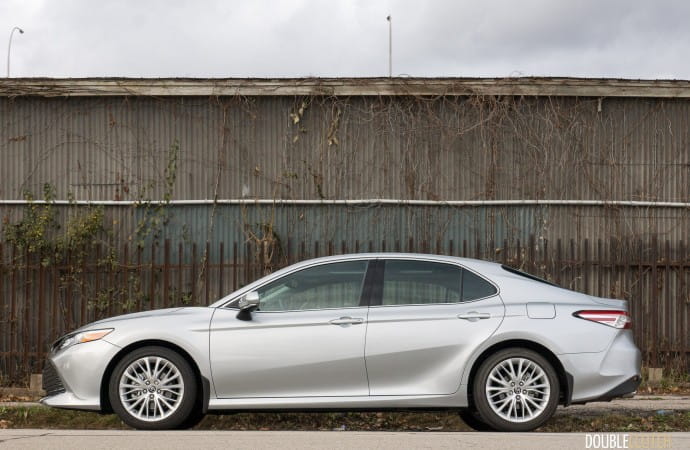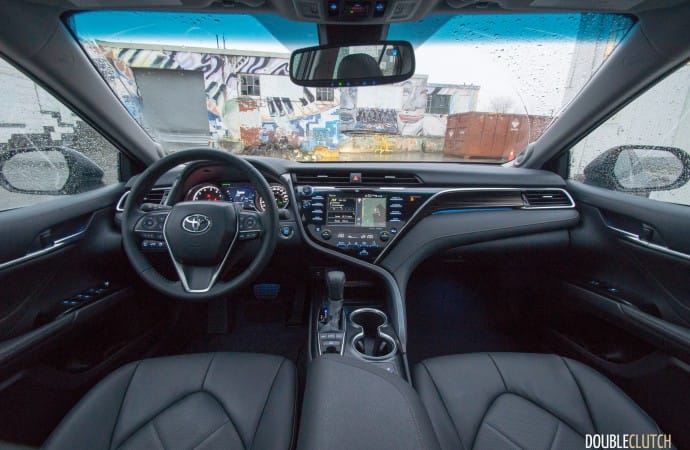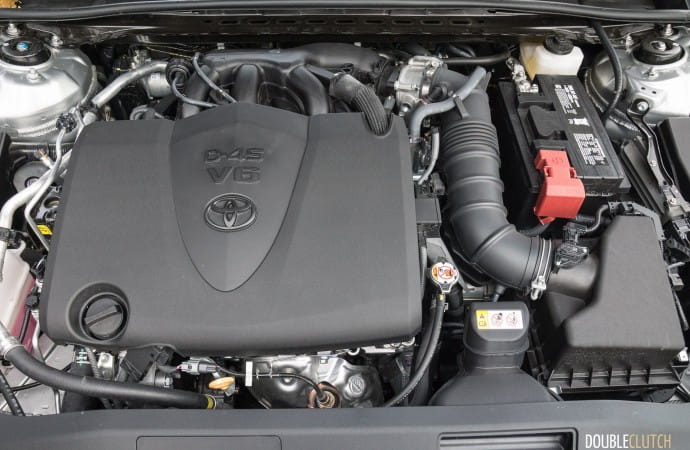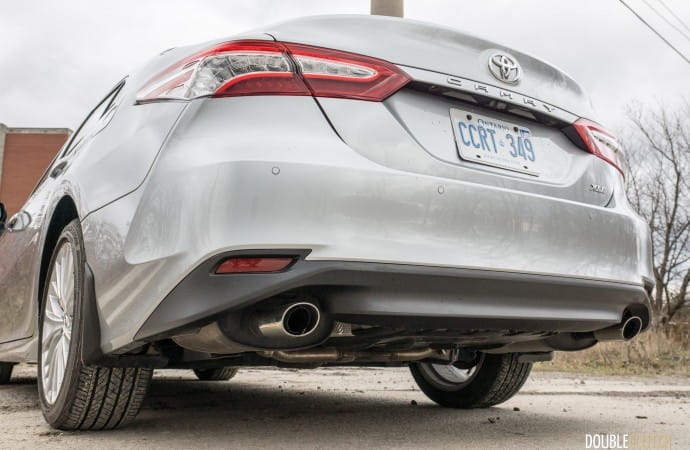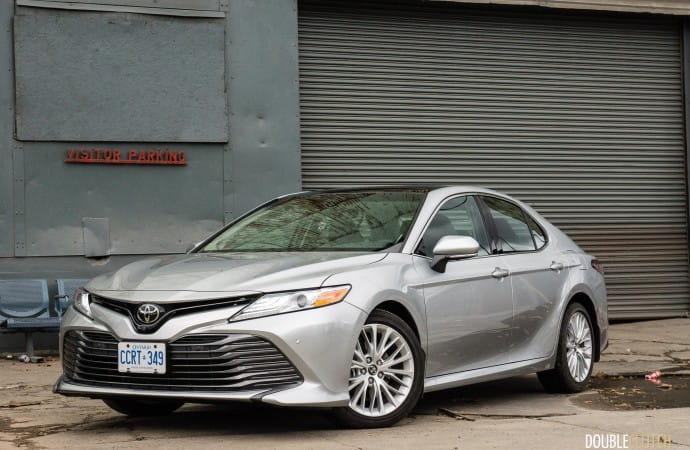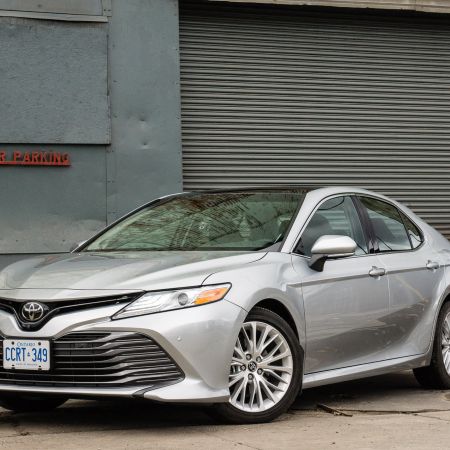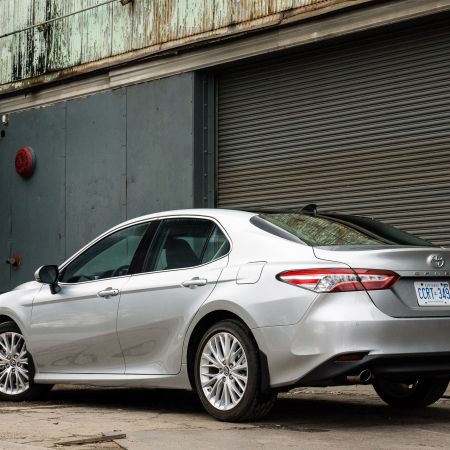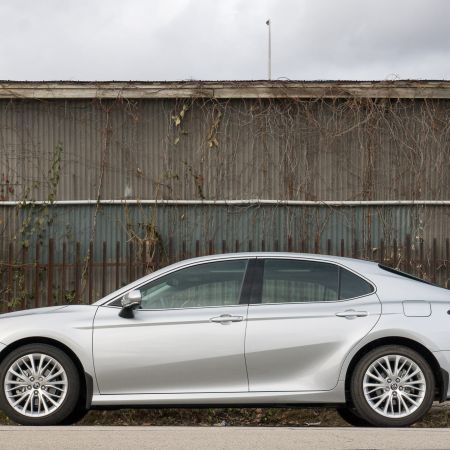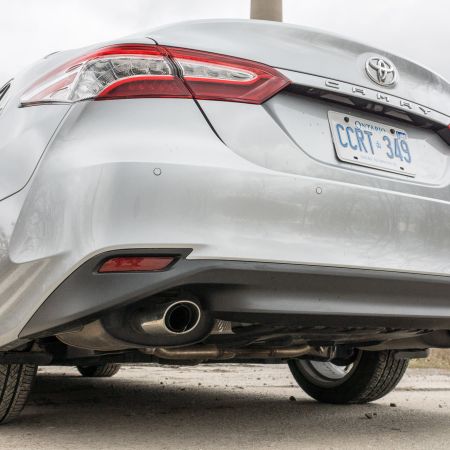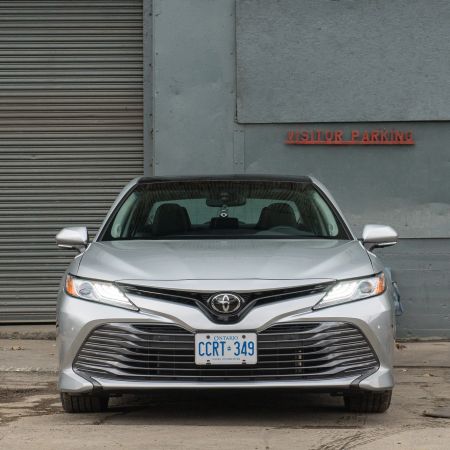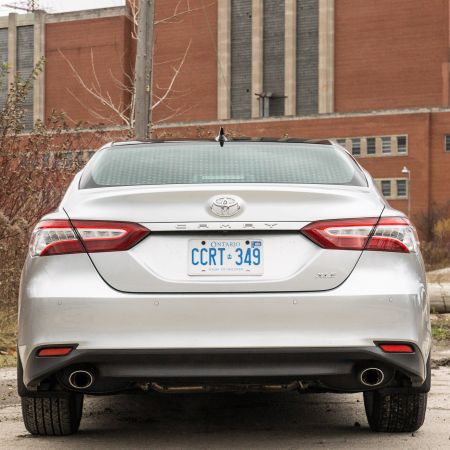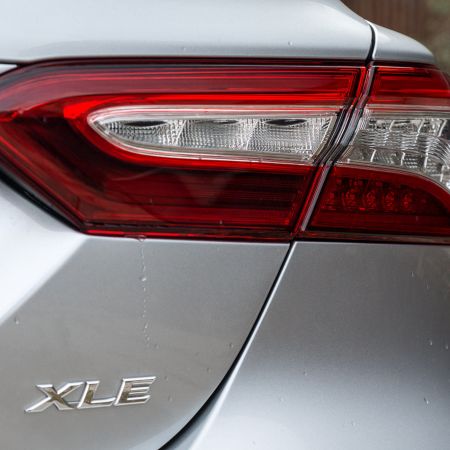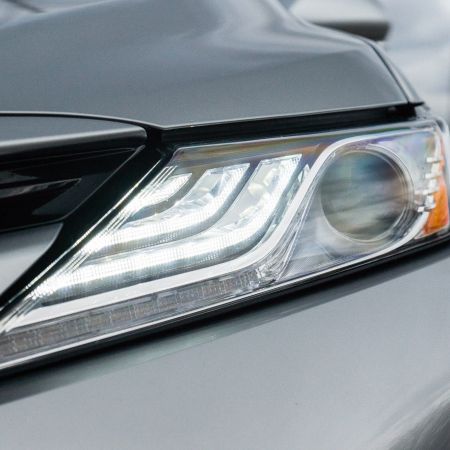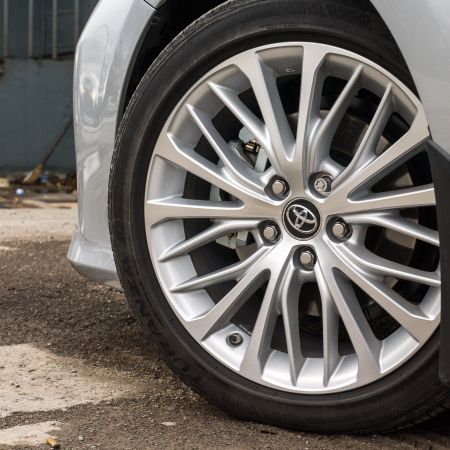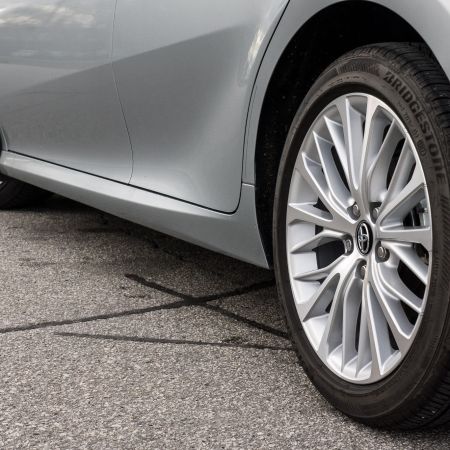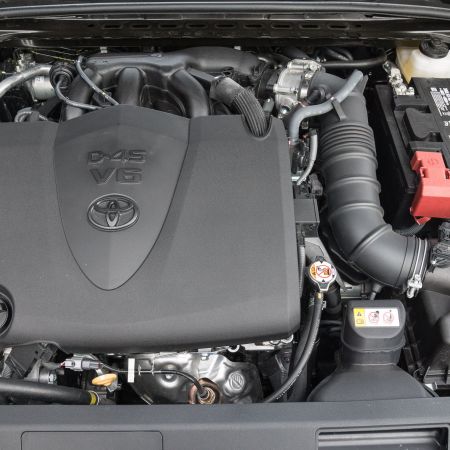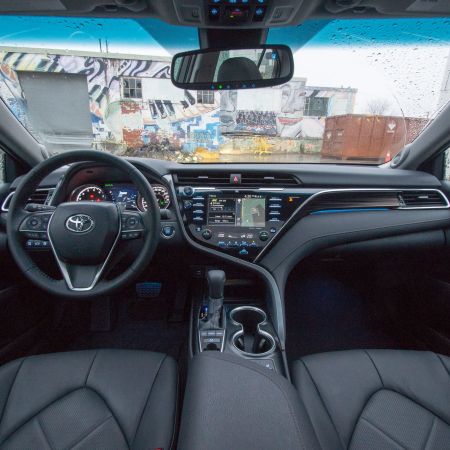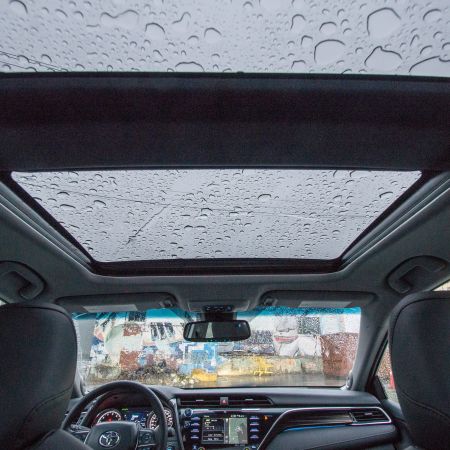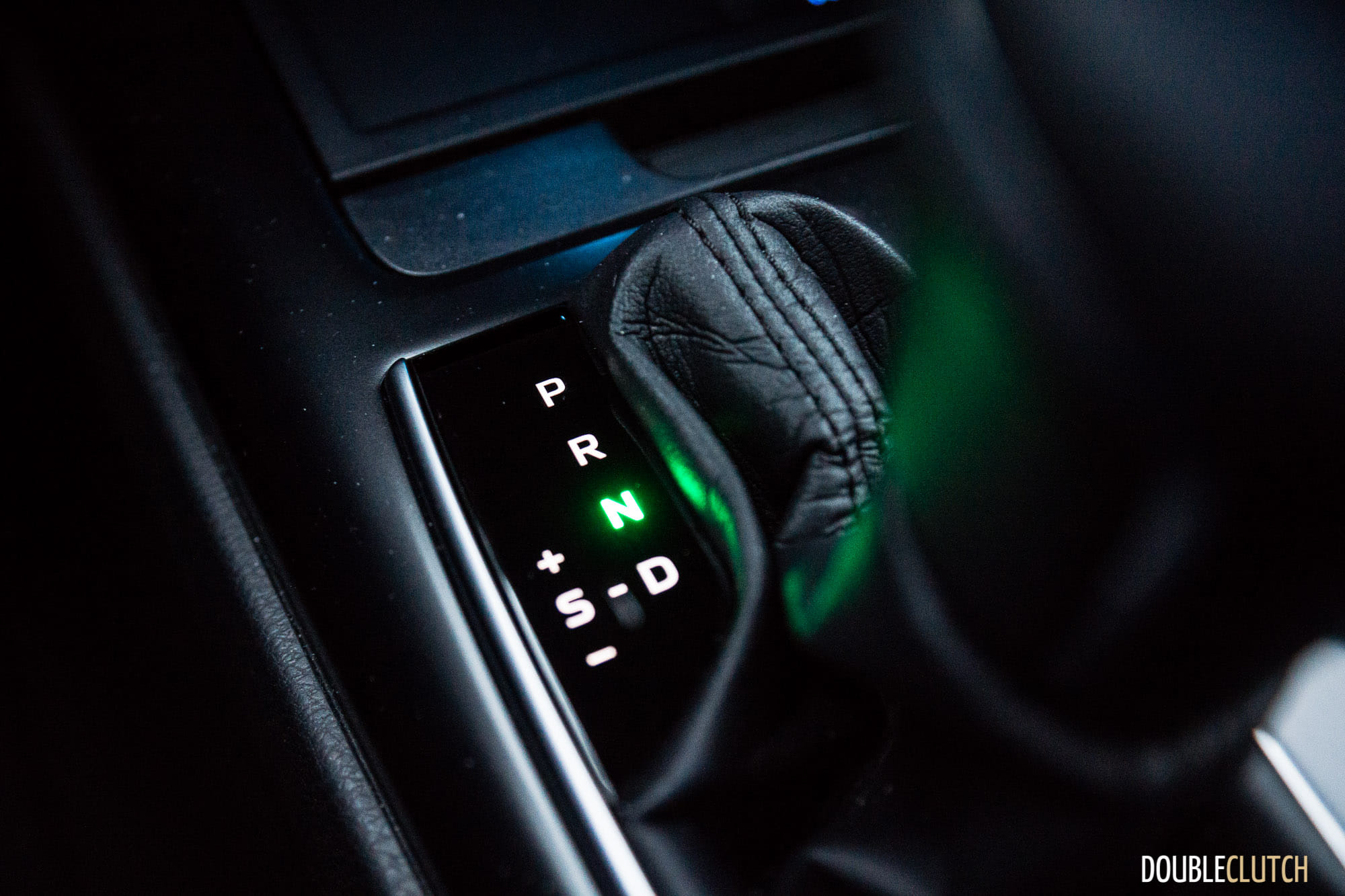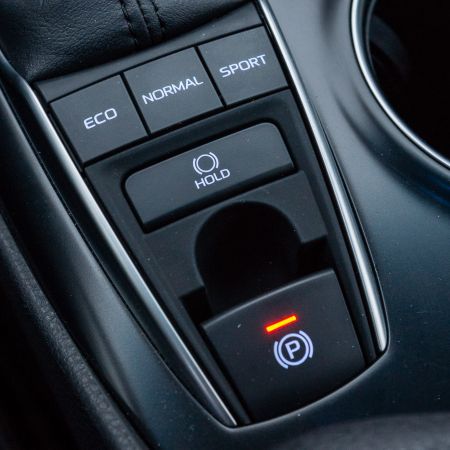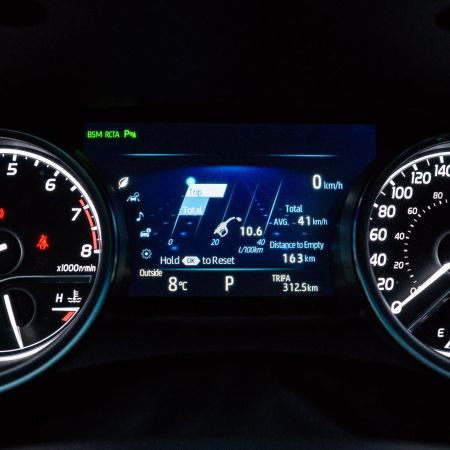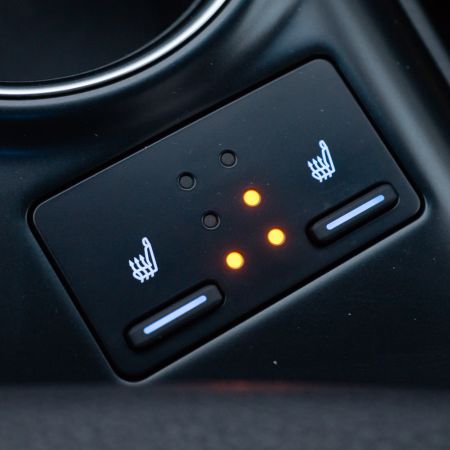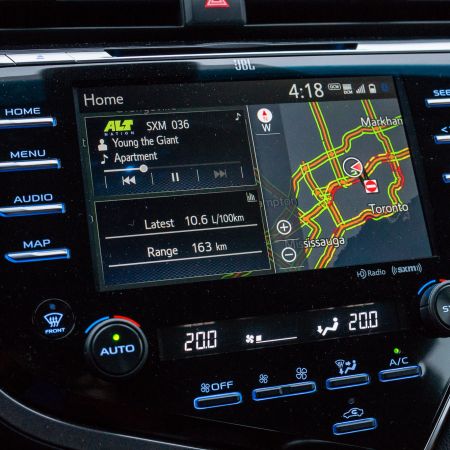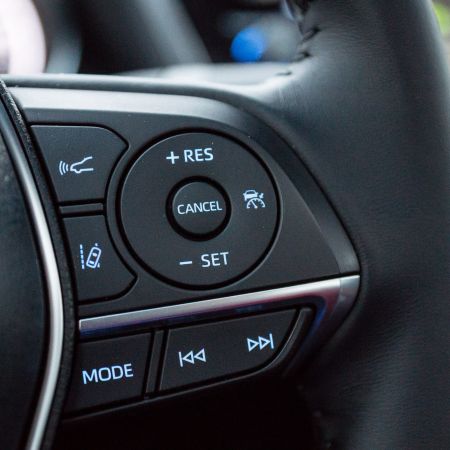The Toyota Camry can be a lot of things to a lot of people. The story was almost always the same: the Camry would end up being part of the family for years, sometimes decades. The family Camry would sometimes get handed down to the children as they got old enough to drive, as parents wanted a reliable car they could trust their kids in. It has been a long-time breadwinner for the Toyota brand, but as we all have been seeing, crossovers have completely changed what the “family car” term stands for. Toyota is selling pretty much every single RAV4 and Highlander (reviewed here) crossover they can make, leaving the “traditional” family car feeling a little behind the times. Toyota has been busy behind the scenes with a multitude of different models, but the new Camry is particularly important to them. We were sent over a Celestial Silver Metallic 2018 Toyota Camry XLE V6 for evaluation.
With the high-riding and versatile crossovers eating up such a big chunk of the family car marketplace, Toyota sought to be a little more creative in how it builds and markets the Camry, in order to keep it appealing to all. In one hand, its overall departure in design could be seen as progressive, but at the same time, it was important not alienate the existing customer base of long-time Camry owners.
The “traditional” Camry XLE tested here makes up one of two body styles. Like in some other places in the Toyota and Lexus line up, there is an emphasis on the large front grille. The XLE continues this trend, with a very wide lower front grille, spanning almost the entire lower front-end of the Camry. Some may find it a little too excessive – myself included. Full-LED headlights are now standard across the board, joining the Corolla in Canada in being ahead of the rest of the competition. The rest of the Camry is fairly subdued, other than some interesting cut lines in the door skins and around the rear taillights – these do a good job changing how light is reflected. The Camry XLE V6 rides on some handsome 18-inch aluminum wheels with 235-section rubber at all four corners.
The Camry XSE (reviewed here) is easily the more progressive model, with its aggressive two-tone roof available with certain colours, available quad exhausts, and much more aggressive front-end. You could say the Camry, in certain configurations, is trying to look like a legitimate sport sedan. We’ve spent some time with the Camry XSE, and came away impressed, partly because of how well it handles, thanks to the advanced TNGA modular platform and suspension tuning. Overall, the Camry XLE is a decent-looking car: the jury may still be out with how it compares to the new Honda Accord (reviewed here), but there seems to be something for everybody, here.
Inside, the corporate Toyota interior configuration advances once again, with a more touch-intensive interface for the infotainment (which still doesn’t feature Android Auto and Apple Carplay integration). Thankfully, there are still a significant amount of redundant buttons and knobs that handle the frequently-accessed operations, such as the volume control, radio station tuning, and the climate control. It’s a good interface: simple and to the point, though the App Suite Connect still is a miss.
Heated seats are standard on every Canadian Camry, but one thing that isn’t standard equipment at any trim level is a heated steering wheel. It’s this one feature that is really making its way down to even entry level cars (see the Kia Rio here), but the Camry doesn’t make it available at all, on any trim level. Let’s hope it eventually gets added during a yearly update, because it is now a feature a lot of people are asking for. Other than that, the Camry XLE features almost-Lexus levels of refinement and polish. There are some more obvious signs of how Toyota keeps the overall price down, but you still get things like a panoramic sunroof, wireless phone charging, interior footwell lighting, and Toyota’s usual Safety Sense system with pedestrian detection.
Under the hood is where things change, but at the same time, stay the same in certain ways. You still get your choice of naturally-aspirated engines, which is in contrast to the rest of the industry who are going to smaller and turbocharged engines. The base Toyota Camry starts you off with a 2.5L inline-four, featuring Toyota’s excellent D4S direct-injection, good for 203hp. The optional 3.5L V6 tested here is also updated with D4S, which helps it produce a generous 301 horsepower at 6,600RPM and 267 lb-ft. of torque at 4,700RPM.
Let that sink in: the Toyota Camry now produces over 300hp, which is in the realm of today’s hot hatchback. While those sports cars focus a lot more on raw speed, it would be unwise to write off the V6-powered Camry as anything less than a “sleeper”. Power is sent to the front wheels by way of a new eight-speed automatic. On anything other than warm and dry tarmac, it’s quite easy to light the front wheels up, if you’re a little too eager with the accelerator.
The elephant in the room, without question, is the Honda Accord. Just like with the Civic (reviewed here), they’ve opted to go down a much more progressive route, when it comes to their powertrains. The Accord ditches the naturally-aspirated engine lineup, and more importantly, the excellent 3.5L V6 is now also gone. The base engine is now a 1.5L turbocharged inline-four, borrowed from the Civic. The V6 has been replaced by a 2.0L turbocharged inline-four, also borrowed but retuned from the Civic Type R. Honda is hedging their bets on modern technology, whereas Toyota has opted to optimize what they have, and leveraging their know-how. It’s a good indicator of how each company works in a very general sense, but at the end of the day, one difference may matter to you: the smoothness and response of the V6 engine can now only be had with the Camry.
From the driver’s seat, the Camry XLE V6 does a great job erring on the side of comfort and smoothness. The softer springs and the additional sidewall from the slightly smaller 18-inch wheels helps keep the ride civilized, as opposed to the firmer XSE with its 19-inch wheels. The eight-speed automatic does a great job taking advantage of the torque from the naturally-aspirated V6. There’s no turbo lag to deal with here, and the transmission is more than happy to lug the engine – because it can. The new TNGA modular chassis rigidity allows it to handle road imperfections with unflappable confidence, and roadholding feel is excellent.
Toyota rates the Camry XLE V6 at 10.5L/100km in the city, 7.1L/100km on the highway, and 9.0L/100km in a combined cycle. During my week of mixed, but mostly city driving, I ended up with an indicated average of 10.5L/100km. The fuel tank will accept up to 60L of regular 87 octane fuel. The interesting part about the Camry is its huge variance in fuel economy, depending on your priorities. There’s the usual four and six-cylinder gasoline options, but it’s hard not to forget the hybrids. Toyota has been working hard at further optimizing their Hybrid Synergy Drive systems; you’ll be able to easily extract numbers around the 5.0L/100km mark without trying.
The base Toyota Camry L starts at $26,390, and you still get things like Toyota Safety Sense “P”, heated front seats, air conditioning, Bluetooth phone connectivity, and LED headlights. In other words: decently equipped with the things you really need. Jumping up into the LE will get you better infotainment, and alloy wheels, among other things. The XLE is considered the fully-loaded trim, with goodies such as leather seating surfaces, dual-zone climate control, push-button start, 18-inch wheels, and that excellent panoramic sunroof. The XLE V6 tested here for $40,690, specifically adds a premium JBL audio system, heads-up display, and a 360-degree camera.
With Honda charting its own course of what they feel the midsize family sedan should be in 2017, Toyota, ever the masters of refinement, tries to come up with a two-pronged solution to this question. The loaded Camry XLE V6 should continue to attract their usual customer: one that is looking for comfort, build quality, and the utmost reliability that the brand is best known for. In this regard, it succeeds, because of its focus on the fundamentals of what a family sedan has always been. The Camry XSE allows Toyota to be more creative, changing things up in a more dynamic way, but it still allows the XLE to do what it does best. The Honda Accord does have that manual transmission trick up its sleeve, but they changed their formula in many other ways that may warrant a closer look to see if it all works for you. With the Camry, a lot of what makes it so good is that everything within is “known good”, which in itself makes it a very attractive option.
See Also:
First Drive: 2018 Honda Accord

